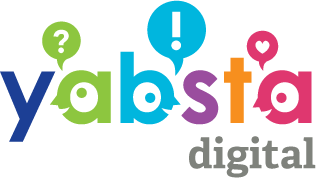
Any business owner who closely monitors their website traffic will know that 2012-2013 has been a game-changing period for the SEO industry. An infamous algorithm update to Google’s main search engine in April 2012 cause thousands upon thousands of businesses to lose their prominent rankings as a result of the tech giant’s crackdown on what they perceived to be shady traffic-driving practices. As if that wasn’t enough, May 2013 saw a second version of this update released, catching many businesses off guard and producing almost the same results en masse. Welcome to the new SEO.
If you’re a business owner whose website has lost traffic as a result of these algorithm updates, you’re likely not concerned with the technicalities behind the drop, and more with how to fix it ASAP, however, understanding the basic inner workings of SEO is key to mapping out a recovery strategy. Here are some tips to help get you back on track:
Understand The Difference Between On-Page & Off-Page SEO
This may sound obvious to those already aware, but you’d be surprised at how many small business owners with websites don’t even know what SEO stands for (it’s Search Engine Optimization, by the way). The two main types of SEO are on-page and off-page. In a nutshell, on-page SEO refers to changes made physically on your site (eg. writing new copy, assigning meta tags), whereas off-page refers to how many other websites, social media platforms and blogs are linking back to your site as an indicator of quality content. To be clear, Penguin 1.0 and 2.0 affected peoples’ off-page SEO significantly more than their on-page (if at all) because the algorithms’ main purpose was to punish websites who engaged in black hat back linking techniques. By running an on-page SEO checklist for your own website, you can officially rule out the issue being an internal problem and focus on what’s really keeping you down.
Be Prepared To Write & Reach Out
With the Penguin updates, Google has essentially backed business owners into and corner and forced them to reevaluate their existing traffic-driving strategies. If you were buying links pre-penguin, that’s now a no-no, so you should be prepared to dedicate resources to things like blogging, social media and link exchanges with reputable websites. The new SEO revolves around content, content, content, and it’s your responsibility to produce and market the kind of content that is both interesting to your target audience and relevant to your business. Run a sports shop? Write a weekly blog about the latest equipment or industry trends and encourage your readership to comment on it. Own a restaurant and want more customers? Start a Facebook page, regularly update it with your daily/weekly specials and encouraging people to click through to your website for a deeper look at the menu. Want to expand your link portfolio in an honest, white-hat way? Reach out to other local businesses and encourage them to do a link exchange with you (it’s win-win). Always be thinking of new ways to write intriguing copy and reach out to your clients and/or potential customers.

Any business owner who closely monitors their website traffic will know that 2012-2013 has been a game-changing period for the SEO industry. An infamous algorithm update to Google’s main search engine in April 2012 cause thousands upon thousands of businesses to lose their prominent rankings as a result of the tech giant’s crackdown on what they perceived to be shady traffic-driving practices. As if that wasn’t enough, May 2013 saw a second version of this update released, catching many businesses off guard and producing almost the same results en masse. Welcome to the new SEO.
If you’re a business owner whose website has lost traffic as a result of these algorithm updates, you’re likely not concerned with the technicalities behind the drop, and more with how to fix it ASAP, however, understanding the basic inner workings of SEO is key to mapping out a recovery strategy. Here are some tips to help get you back on track:
Understand The Difference Between On-Page & Off-Page SEO
This may sound obvious to those already aware, but you’d be surprised at how many small business owners with websites don’t even know what SEO stands for (it’s Search Engine Optimization, by the way). The two main types of SEO are on-page and off-page. In a nutshell, on-page SEO refers to changes made physically on your site (eg. writing new copy, assigning meta tags), whereas off-page refers to how many other websites, social media platforms and blogs are linking back to your site as an indicator of quality content. To be clear, Penguin 1.0 and 2.0 affected peoples’ off-page SEO significantly more than their on-page (if at all) because the algorithms’ main purpose was to punish websites who engaged in black hat back linking techniques. By running an on-page SEO checklist for your own website, you can officially rule out the issue being an internal problem and focus on what’s really keeping you down.
Be Prepared To Write & Reach Out
With the Penguin updates, Google has essentially backed business owners into and corner and forced them to reevaluate their existing traffic-driving strategies. If you were buying links pre-penguin, that’s now a no-no, so you should be prepared to dedicate resources to things like blogging, social media and link exchanges with reputable websites. The new SEO revolves around content, content, content, and it’s your responsibility to produce and market the kind of content that is both interesting to your target audience and relevant to your business. Run a sports shop? Write a weekly blog about the latest equipment or industry trends and encourage your readership to comment on it. Own a restaurant and want more customers? Start a Facebook page, regularly update it with your daily/weekly specials and encouraging people to click through to your website for a deeper look at the menu. Want to expand your link portfolio in an honest, white-hat way? Reach out to other local businesses and encourage them to do a link exchange with you (it’s win-win). Always be thinking of new ways to write intriguing copy and reach out to your clients and/or potential customers.





